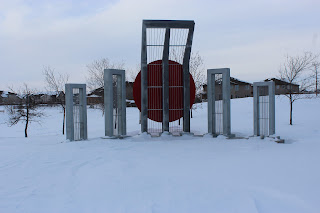February 21 is International Mother Language Day. This year, I joined many others to celebrate in Winnipeg on February 20. I joined many in our community who have roots in Bangladesh as well as other from other countries who also joined the celebration. The origin of International Mother Language Day is in Bangladesh. When a decision was made in the early 1950s that the Bengali language would not be an official language of Pakistan (Bangladesh was then East Pakistan), there were many protests, with one particularly notable one on February 21, 1952. In time, by 1956, Bengali was accepted as an official language of Pakistan. However the differences between East and West Pakistan were large and in 1971 Bangladesh became independent. The importance of a person's mother language was recognized first as Mother Language Day in Bangladesh. By 1999, February 21 was recognized as International Mother Language Day by the United Nations. Today, it is celebrated around the world. The importance of a person's mother language is increasingly recognized. It is important for a child to have roots in the child's mother language and culture. Language and culture are closely tied together. A grounding in a person's mother language and culture is important to be able to reach out with strength to others around the world and to part of the diversity that is the increasingly recognized as a strength of human organizations and human societies. During the celebration many young people were recognized for their drawings and paintings and their dancing. One is below. And further below is a photo of the International Mother Language Plaza in Winnipeg with councillors Janice Lukes and Markus Chambers were able to help achieve.
Too often, our homes, buildings, and outdoor spaces are designed without sufficient consideration given to how they will impact little people, those with large bodies, or those with disabilities. Manitoba should become a leader in designing and building new structures so they’re comfortable and accessible to all. Further, the province needs to do more to adapt our existing infrastructure, so that it meets everyone’s needs. The design of our built environment makes daily living a challenge for too many. A friend, who uses a wheelchair, must call ahead wherever she goes to ensure she can enter a restaurant, store, salon, etc. A young person in River Heights has a struggle each fall to make sure that with his cerebral palsy he is able to get the support he needs to do well in school. A large-bodied man I know has been bedridden for five months because he lacks access to a usable lift or wheelchair. Samantha Trubyk, President of the Little People ...


Comments
Post a Comment